Last Post - Flying Officer (Pilot) CLYDE WILLIS BYERS
Back to C. W. Byers crew page | Home |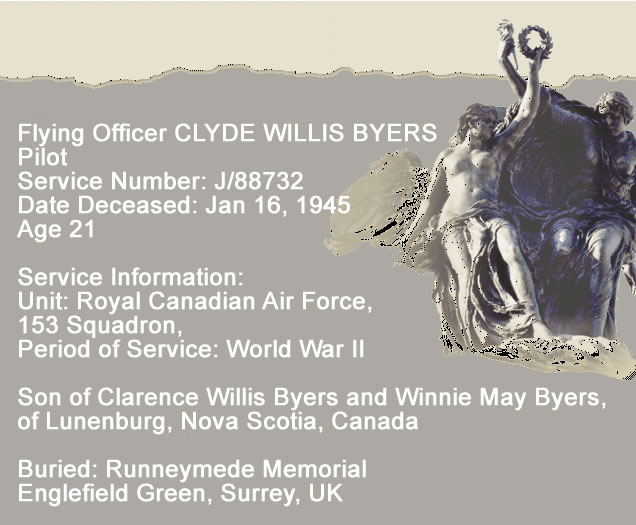
Source: reconstructed according to http://www.vac-acc.gc.ca/remembers
Lost Bomber Report
Serial Range NF906 - NG503 This aircraft was one of 400 Lancaster Mk.1s ordered from Armstrong Whitworth Aircraft (Baginton) and delivered from Jul44 to Feb45 mainly with Merlin 24 engines from Baginton and Bitteswell. NG335 was delivered to 153 Sqdn Nov44. No operational history available. Airborne 1730 16Jan45 from Scampton to bomb the Braunkohle-Benzin synthetic-oil plant. Lost without trace. all are commemorated on the Runnymede Memorial.
Source: www.lostbombers.co.uk
Click here to read the entire report.
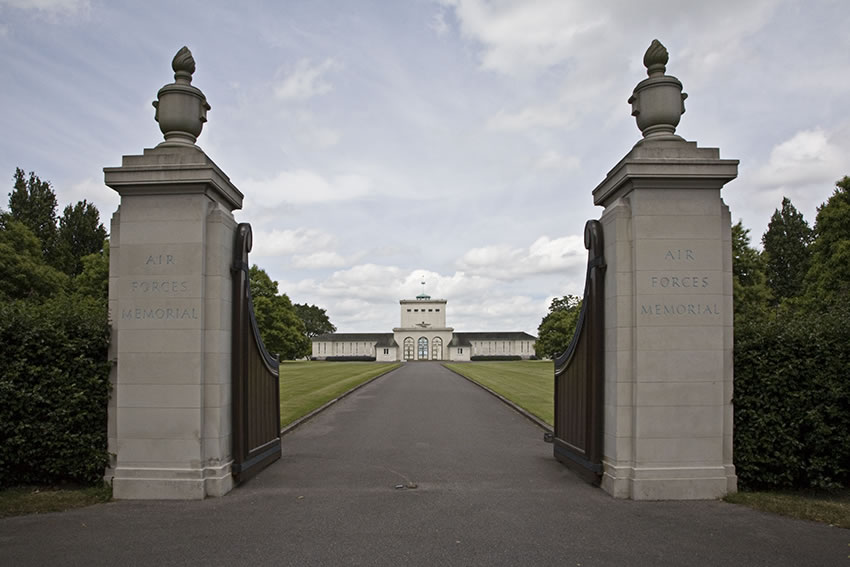
Faintly on the image above one can see the Per Ardua Ad Astra logo of the Royal Air Force, and Royal Canadian Air Force. It depicts an eagle flying, and with its head lowered and to the left, with the logo, loosely translated as "Through adversity to the stars", with an Imperial Crown above.
The image below shows the entrance to the Air Forces Memorial. The Per Ardua sculpture shows above the 3 arched cloister windows, and the astral crown can be seen above the building.
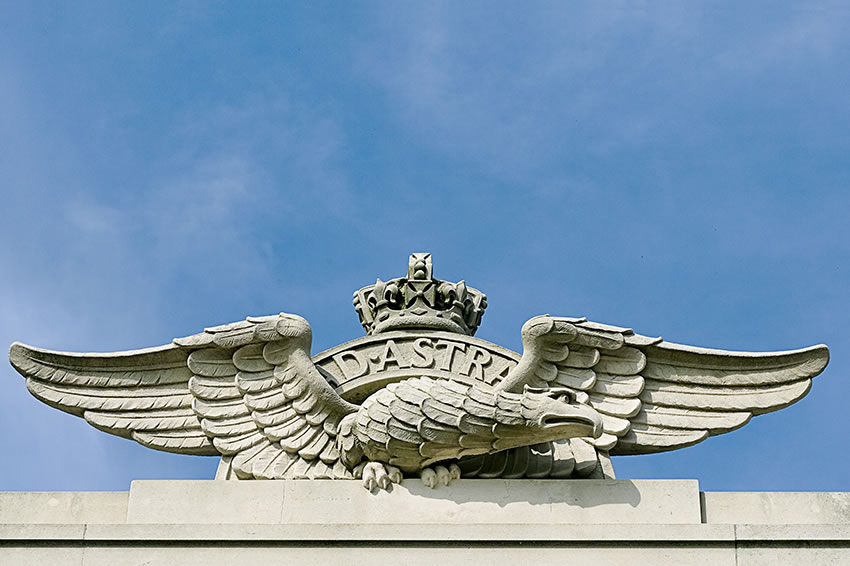
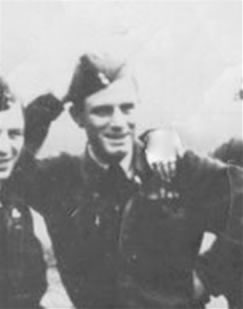
Flying Officer Clyde Willis Byers
F/O Clyde Byers is the son of Clarence Willis Byers and Winnie May Byers née Miller of Lunenberg, Nova Scotia..
Image courtesy of Jim Shilliday, brother of crew member Robert Charles Shilliday. FO Byers is surrounded by crew members, leaning on Robert Crow, and the hand on his left shoulder is Jim Shilliday. Click here to see the entire photo.
The Air Forces War Memorial at Runnymede recognizes the sacrifices of 20,000 men and women who gave their lives. The site overlooks the Thames River and the meadow where the Magna Carta which recognized basic freedoms under law was sealed by King John in 1215. The memorial was designed by Sir Edward Maufe with sculpture by Vernon Hill. The words by Paul Scott and the images by Antony McCallum convey in some measure the debt owed to the brave men and women of the Commonwealth Airforces.
"Here, where the trees troop down to Runnymede, Meadow of Magna Carta, field of freedom,
Never saw you so fitting a memorial" ...From a poem by Paul Scott.
All images of Runnymede on this page, unless specifically noted, are courtesy of Antony McCallum at Wyrdlight McCallum. http://wyrdlight.com. Copyright remains the property of Antony McCallum. The word Wyrd comes from the anglosaxon and is translated as ever becoming, ever-changing light. Please click here to see more of Antony McCallum's wonderful work.
Nearly 40,000 of the men and women of the Air Forces of the British Commonwealth who gave their lives during the war have no known grave. 20,456 of these brave men and women are commemorated by name on the Runnymede Memorial. The architect, Sir Eward Maufe designed the site as a rectangular plot surrounded on all sides by buildings. (a Quadrangle)
The image below shows the astral crown faintly on top of the control tower. Scroll down to see a close-up.
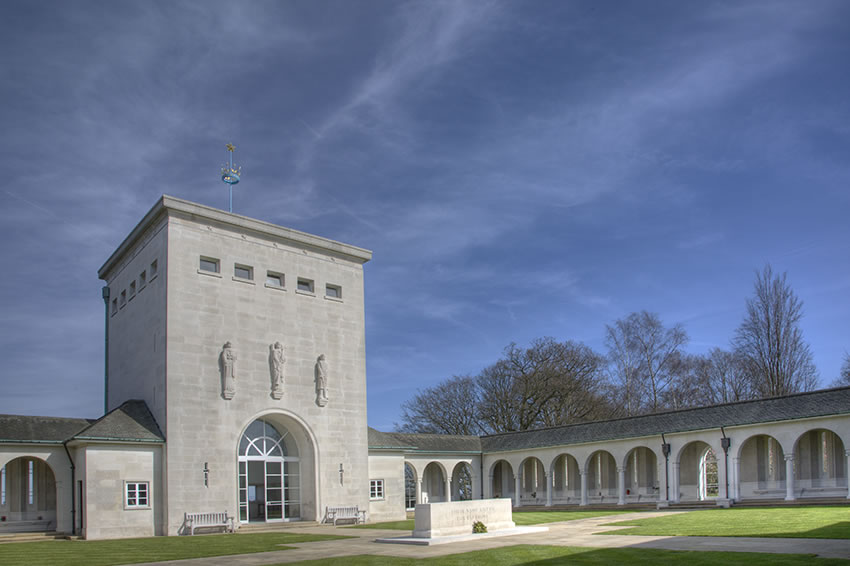
These sculptures, below, are of the figures Justice, Victory, and Courage They were carved by the sculptor Vernon Hill and are found above the main entrance to the Chapel. In the foreground, one can see the phrase, "their name liveth for evermore" Scroll down to see a close-up and details of the phrase chosen by Rudyard Kipling.
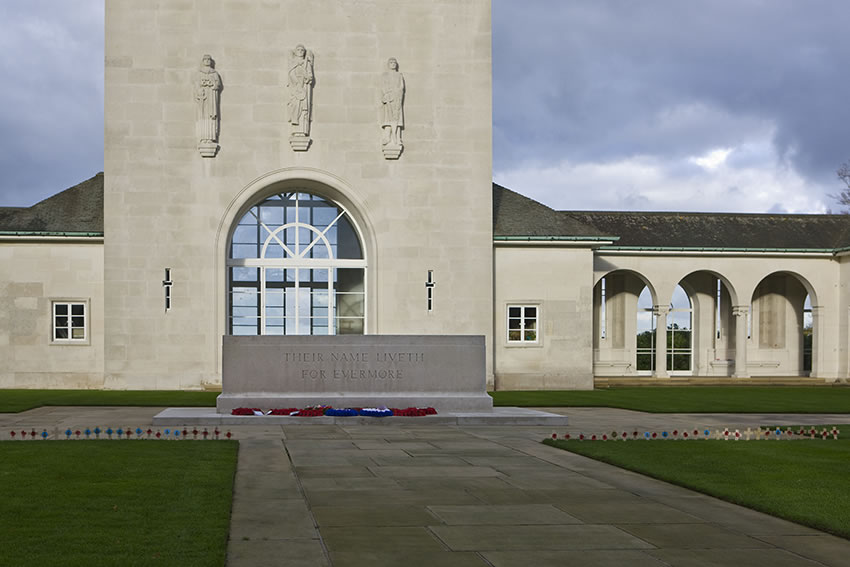
The close-ups below show the blind-fold on Justice on the left, Victory, with the horn and wreath, and Courage with the sword and shield. They were carved by the sculptor Vernon Hill and are found above the main entrance to the Chapel.
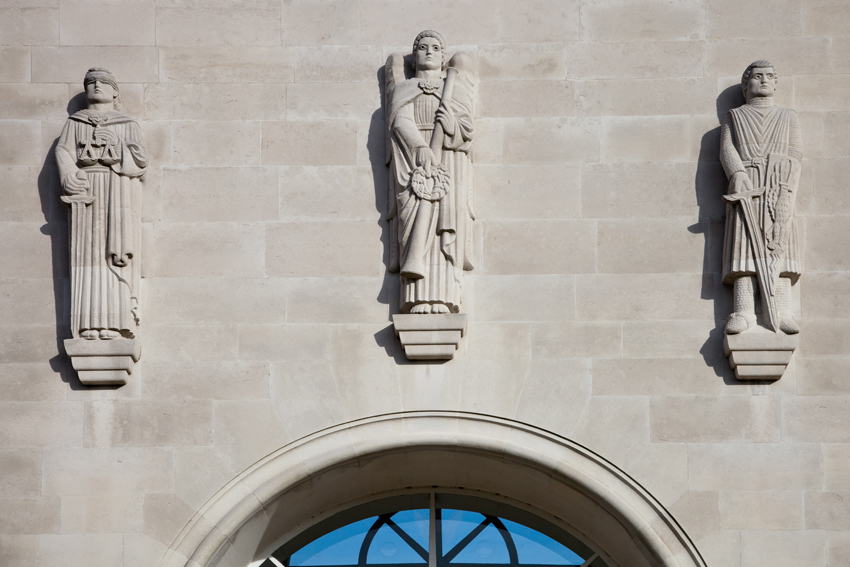
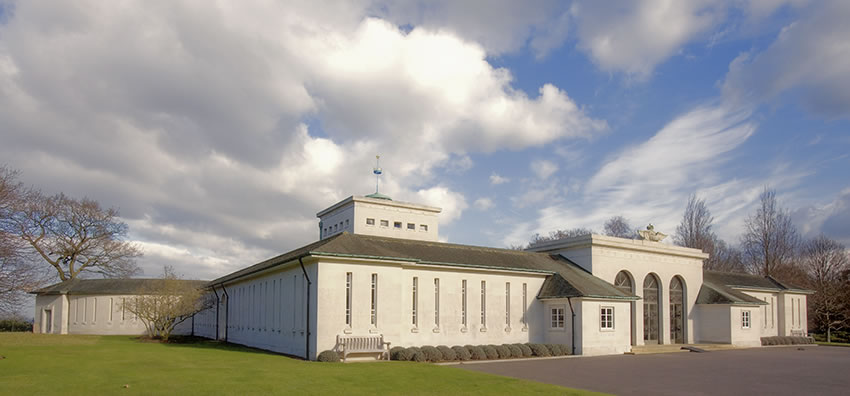
The Runnymede Site consists of 182 acres of meadow backing the Thames river and adjacent woodland. Runnymede Meadow is believed to be the site where the Magna Carta was sealed. From the Tower, one can see sweeping views of the adjacent countryside.
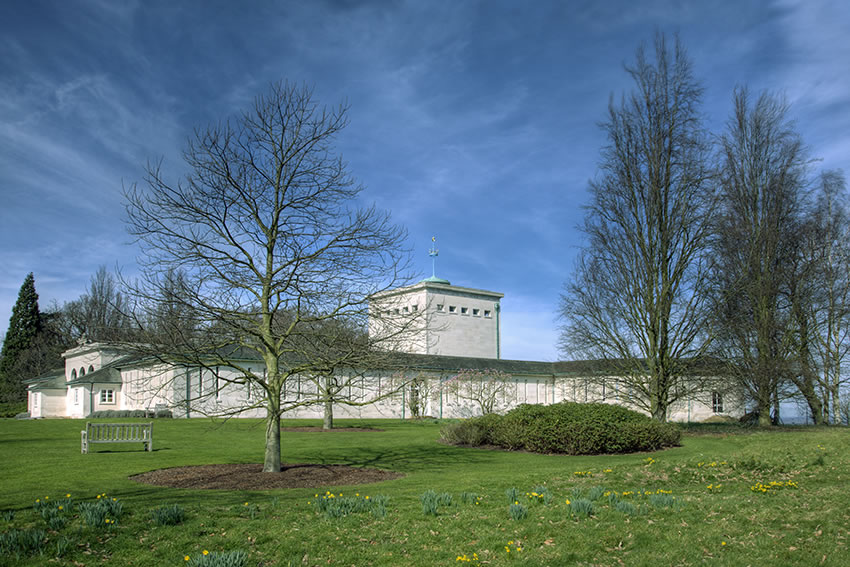
This image above and below shows the astral crown. In the image above, the astral crown graces the top of the control tower. The sculpture is shown in more detail below and consists of a blue crown and large central star with smaller stars intermingled with airforce wings, all in gold. The symbol is historically used to represent military air service.
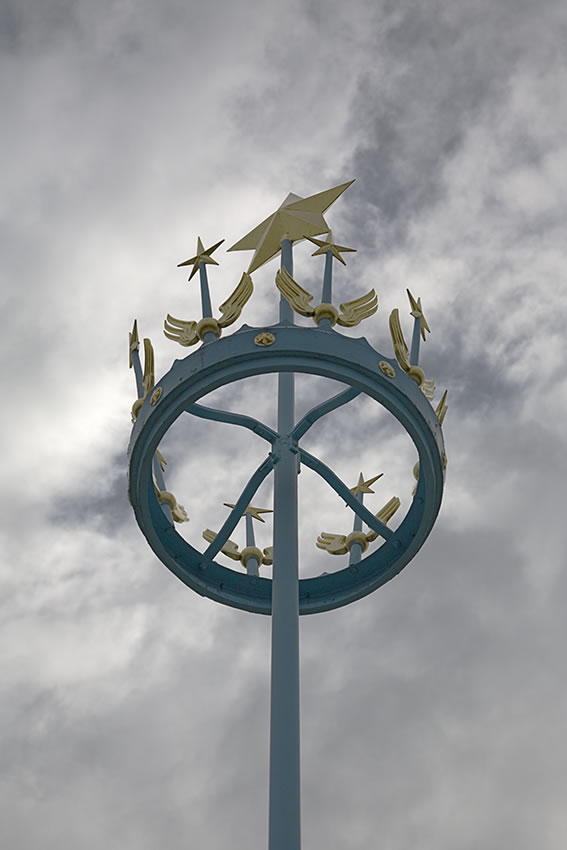 .
.
Lions guard the entrance gates.
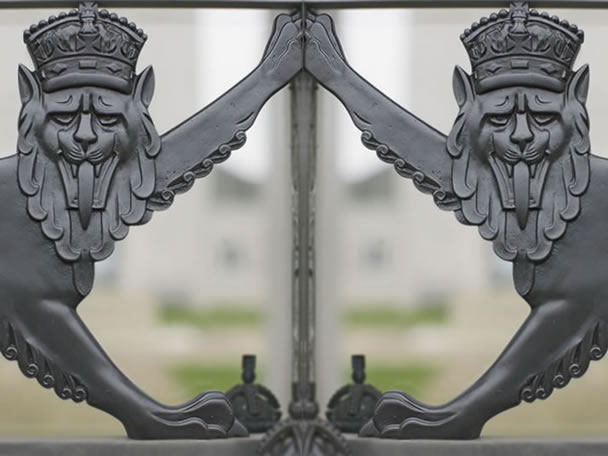
Follow these links to see the Airman's Psalm, engraved on the great north window of the shrine, and a poem written by Paul Scott a student.
Rudyard Kipling, the British author and poet lost a son in World War I. At the request of the Common Wealth Graves Commission, he selected the phrase, "Their Name Liveth for Evermore", from Ecclesiasticus 44:14. "Their bodies are buried in peace, but their name liveth for evermore."
The phrase is engraved in stone at all Commonwealth War Graves Sites, and Antony Mccallum has photographed the image below from Runnymede.
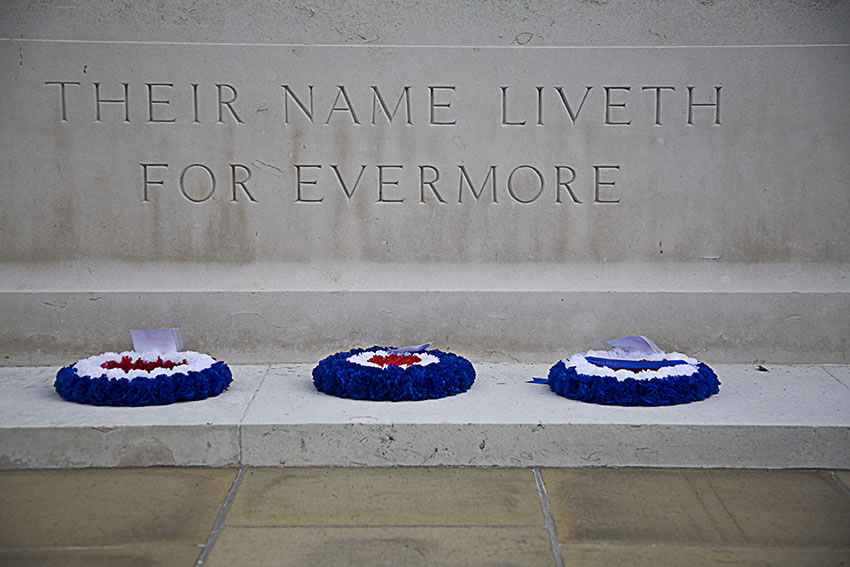
Looking like partially opened stone books, the names of the dead are recorded by year and by Commonwealth Airforce on the tablets at the Memorial. The painted ceilings were created by John Hutton.
/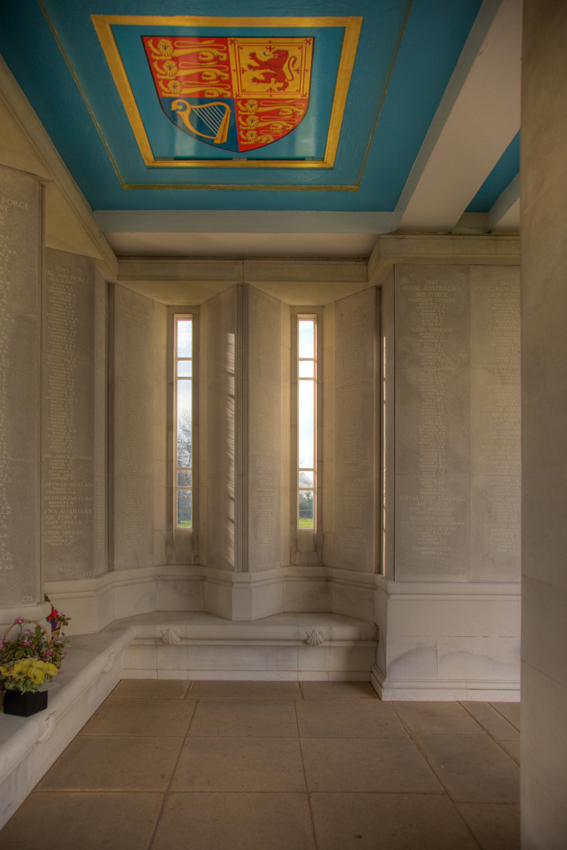
The image below shows the sunlight illuminating the names of the fallen on the left. The building is designed to sytematically illuminate each panel in turn, as the sun moves across the horizon.
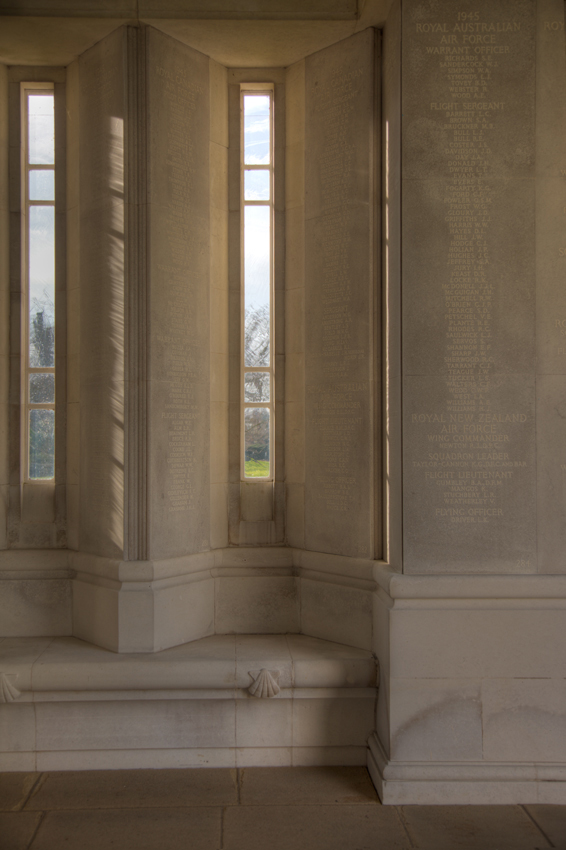
The images below show the cloisters, a series of open walks with columns facing the rectangular quadrange. The architect, Sir Edward Maufe designed the placement of the columns such that the sunlight precisely illuminates each panel with names on it in turn. Renowned British photographer, Antony McCallum has captured the light in the striking images below, waiting patiently for the light to advance to the proper panel with the names on it.
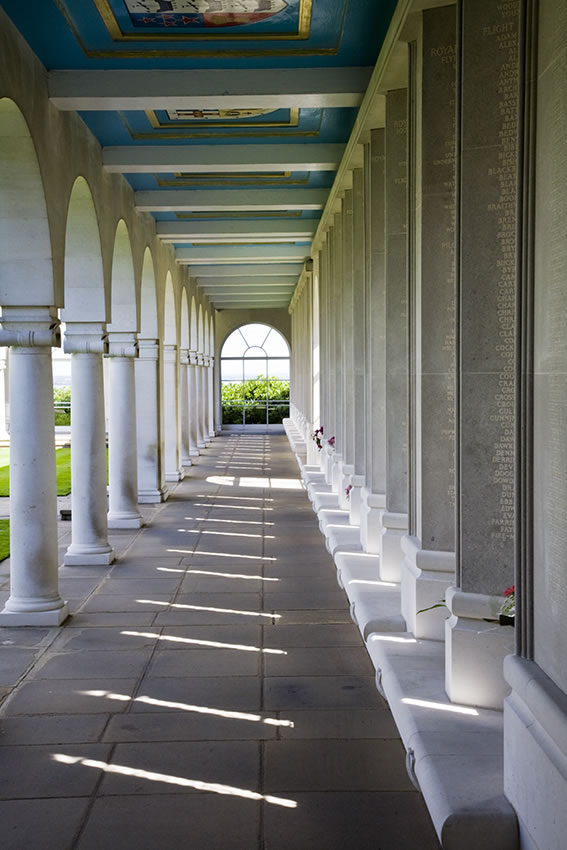
The Cloister Ceilings are decorated with coats of arms of the Commonwealth Countries, below one can see the Australian Coat of Arms in the foreground and the Canadian Coat of Arms in the background.
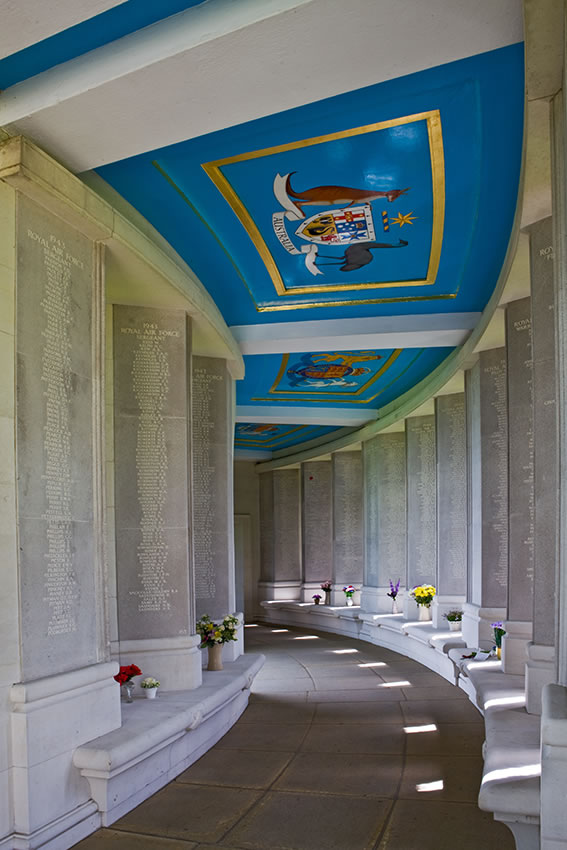
Flying Officer Clyde Willis Byers' name is engraved on Panel 278 on the left side of the lancet window below, which is in the south east corner of the cloister. The architect, Sir Edward Maufe designed the Memorial so that as the sun moved across the sky it would illuminate the panels in turn through the lancet windows. Next to the Royal Canadian Airforce Panels is the Royal Australian Panel which can be seen on the right of the photo below. One can also see a cross with poppies laid at the base of Panel 277. Renowned photographer Antony McCallum waited patiently for the sunlight to illuminate panel 278 before taking the image below. Scroll down to see a close-up of Panel 278 with the name of F/O Clyde Willis Byers.
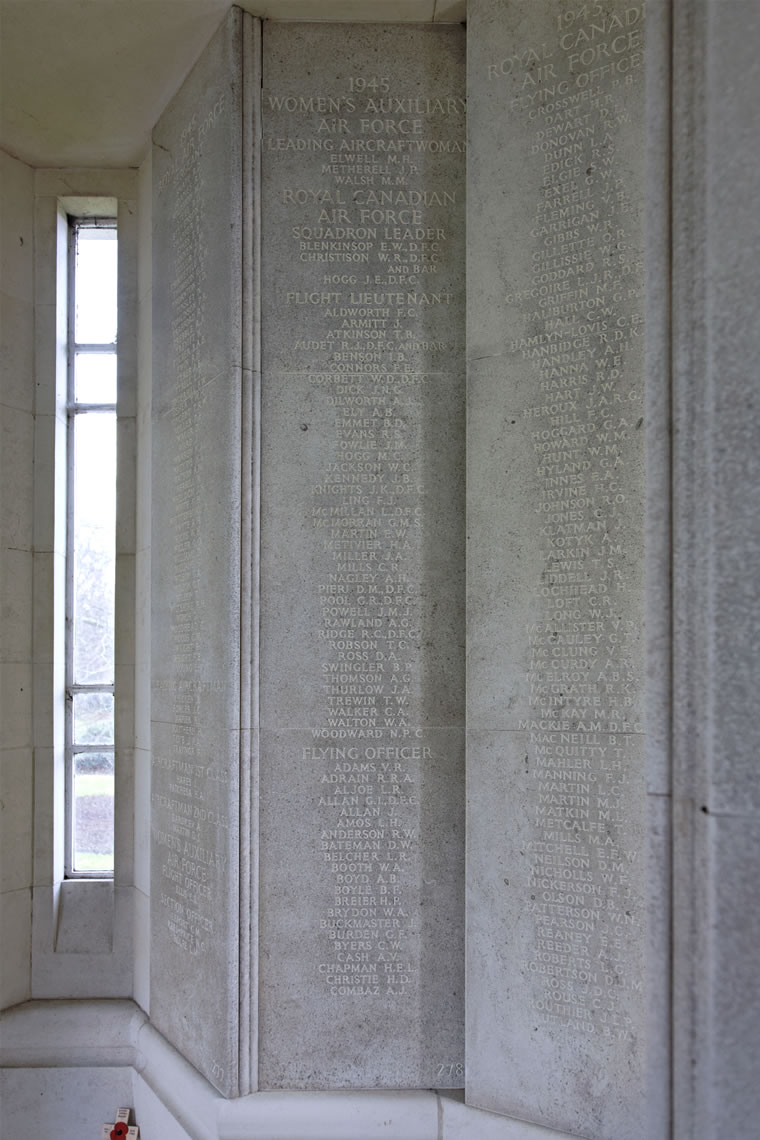
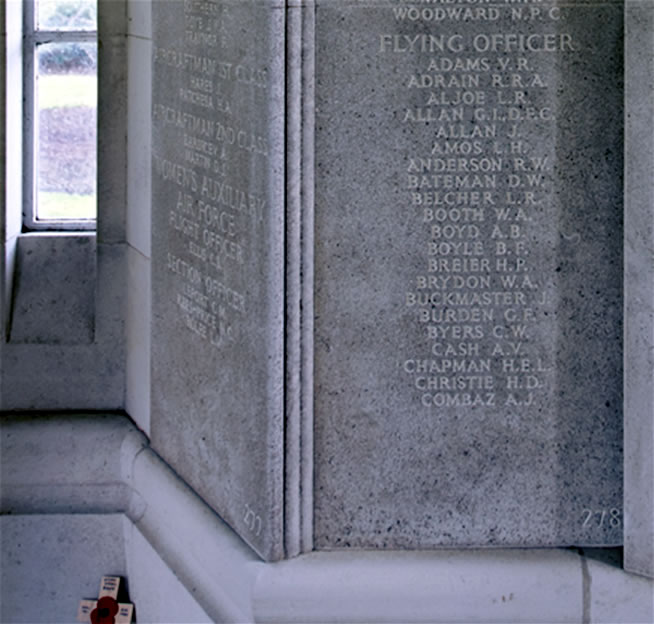
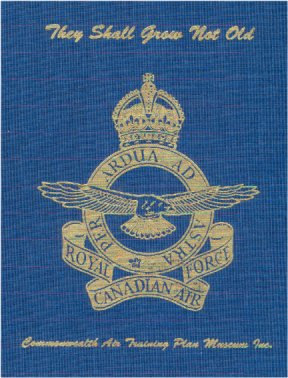
Click here to see the "They Shall Not grow Old" entry for Flying Officer Clyde Willis Byers.